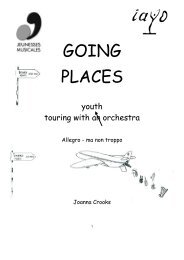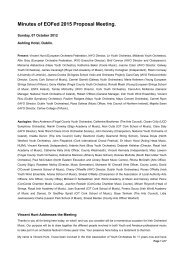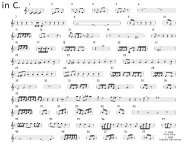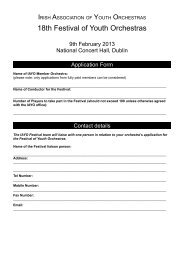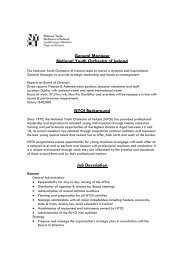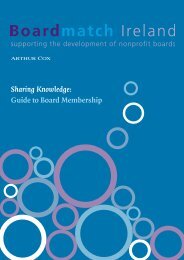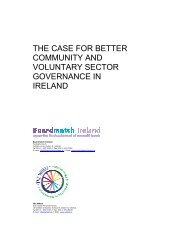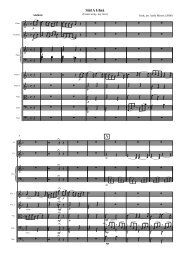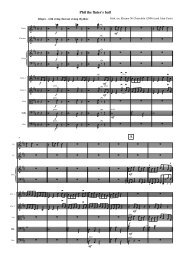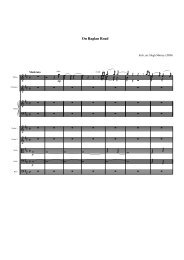A SOUND EAR II - Association of British Orchestras
A SOUND EAR II - Association of British Orchestras
A SOUND EAR II - Association of British Orchestras
Create successful ePaper yourself
Turn your PDF publications into a flip-book with our unique Google optimized e-Paper software.
A <strong>SOUND</strong> <strong>EAR</strong> <strong>II</strong><br />
• your noise policy and consultation arrangements;<br />
• where and how people can obtain personal hearing protection (or a direction that freelancers bring their own);<br />
• how to report defects in personal hearing protection and other controls;<br />
• the employee’s duties;<br />
• the arrangements for health surveillance;<br />
• symptoms to look out for, who to report to and how;<br />
• managers must also understand how to carry out assessments, select and implement noise controls, monitor<br />
compliance and progress, etc.<br />
Clearly, some <strong>of</strong> this is generic material which belongs in training sessions, while some is session-specific information to<br />
be provided when booked, or on the day.<br />
Why train?<br />
• Because noise control will be a major change for orchestras and musicians, and will founder if people are not<br />
convinced <strong>of</strong> the need – ie. the threat to their hearing and thus <strong>of</strong> their livelihood and pleasure.<br />
• Because noise control is not simple, and people need to understand the pros and cons <strong>of</strong> the various options available.<br />
• Because noise control is not optional, and people need to understand their responsibilities.<br />
• Because managers need to understand how to make it all work, and go on working.<br />
In terms <strong>of</strong> providing information, orchestras are:<br />
• placing papers on music stands;<br />
• putting notices by the stage;<br />
• providing verbal announcements at the beginning <strong>of</strong> the session;<br />
• including information in schedules;<br />
• emailing everyone on their list;<br />
• and more.<br />
As with health surveillance, a national scheme may emerge. In the meantime, the essentially full-time orchestras might<br />
be expected to lead on rolling-out player training. Freelancers should not be drenched in training, and employers may<br />
choose to require (in time) that a player provide pro<strong>of</strong> <strong>of</strong> having received appropriate training within the previous<br />
three years. Note that Health & Safety training normally has a three-year shelf-life.<br />
21<br />
Conductors<br />
Regular conductors should be incorporated as far as you can manage – the more they understand, the more they are<br />
likely to engage with or initiate experiments in noise control. <strong>Orchestras</strong> which have trained their conductors have<br />
received enthusiastic support. <strong>Orchestras</strong> which have explained the situation (eg. by writing to all their conductors)<br />
have met general acquiescence.<br />
Consultation<br />
Health and Safety is founded on consultation with employees or their representatives.<br />
Where there is an established safety committee, it should be consulted on how best to develop the management and<br />
monitoring <strong>of</strong> noise control. The committee may choose to establish a sub-committee to deal with noise. Conversely,<br />
a noise committee may form the nucleus <strong>of</strong> an as yet unformed safety committee. Primarily freelance orchestras may<br />
identify a stable core <strong>of</strong> players who could be consulted in the course <strong>of</strong> routine meetings, or in time between adjacent<br />
sessions, or by email etc, and may liaise with any MU rep.<br />
As well as players, you may need input from people such as responsible managers, conductors, resident composers,<br />
safety and occupational health advisers, and representatives from frequently visited venues.



